| Umělec magazine 2007/1 >> Frog steak | List of all editions. | ||||||||||||
|
|||||||||||||
Frog steakUmělec magazine 2007/101.01.2007 Petra Vargová | interview | en cs de |
|||||||||||||
|
Tissue art is the art of manipulating growing tissue into statues or the form of other objects. The Australian group SymbioticA (www.symbiotica.uwa.edu.au) started these experiments using animal tissue. They let the tissue grow into the forms of half-alive dolls or the ear of the famous artist Stelarc, or they created bird wings from the tissue of pigs. In their project Disembodied Cuisine, Catts promises to solve every vegetarian’s problem of not eating meat because of the violence inflicted on animals. Last November in Prague, SymbioticA presented itself at the exhibition bioart, which aimed to highlight the interdigitization of art and science and ran simultaneously with the TransGenesis festival (www.transgenesis.cz) as an additional program to the Week of Science and Technology organized by the Academy of Sciences of the Czech Republic. Petra Vargová spoke to Oron Catts, the co-creator and art director of the SymbioticA institute.
You come from Australia. What is the contemporary art scene like there? We are based in Perth, Western Australia. Perth is the most isolated big city in the world and is located on the west coast of Australia, far away from the main cities of Australia which are on the east coast. The fact that Perth is so isolated makes the art scene here quite different from the rest of Australia. Perth has a very vibrant and independent new media art community. Having an institute such as SymbioticA here in Perth also means that many international artists are coming through here and enriching cultural life. As a co-founder and artistic director of SymbioticA (Art Science collaborative Laboratory, School of Anatomy & Human Biology, University of Western Australia) can you tell us what SymbioticA focuses on and who works there? SymbioticA is the first research laboratory of its kind in the world, in that it enables artists to engage in wet biology practices in a biological science department. SymbioticA sets out to provide a situation where interdisciplinary research and other knowledge and concept generating activities can take place. It provides an opportunity for researchers to pursue curiosity-based explorations free of the demands and constraints associated with the current culture of scientific research while still complying with regulations. SymbioticA also offers a new means of artistic inquiry, one in which artists actively use the tools and technologies of science, not just to comment about them, but also to explore their possibilities. The research here focuses on hands on exploration of different levels of manipulation of living systems from an artistic and cultural perspective. In order to do so, SymbioticA developed different programs. We offer a residency program for artists and scholars, a postgraduate program, units for undergraduate students, and we organize workshops, symposiums and exhibitions. To date, we have had more than thirty residents working on projects ranging from molecular biology and genetics, through culturing animal, plant, fungi and bacteria cells and tissues, to working with animals and ecologies. SymbioticA also has a few core research projects, such as the Tissue Culture & Art Project and the SymbioticA Research Group. Can you tell us something more about the position of artists working in a laboratory? How does it change their perception of art, how does it influence the scientists working there? What is the crucial difference between an artist’s studio and a laboratory? The uniqueness of SymbioticA is that it is framed as a research lab. This means that the resident comes in as a researcher and is treated as an equal to the post doc researcher in the context of science. The idea is to provide the opportunity for our researchers (the artists) to develop the skills needed for the projects they research. This usually starts with a period of mentorship followed by an intense practice based research and learning period. Obviously, every resident is different and each person develops their own way of working, but as the emphasis in SymbioticA is on hands on engagement all of our researchers spend much of their time in the biology lab. It is difficult to explain how SymbioticA changes our residents’ perception of art. Our residents come from diverse backgrounds and are in different stages of their careers. Some have already worked on projects dealing with the life sciences, while for others this is the first time they engage directly with scientists. That said, it seems that most of our residents come with fairly non-traditional views about what art is and what constitutes a corresponding artistic medium or practice. What the residency often does is change our residents’ perception of science. A common pattern (and this is a gross generalization) that seems to emerge is that the first thing that attracts their attention is the novelty (for them) of the scientific lab and process. They seemed to be attracted to the mise-en-scène of the lab, then fascinated by the new skills and processes they learned and been exposed to. These two stages are usually manifested by much lab documentation and the artist working in a scientific setting. Once they got it out of their system, they began to question the assumptions behind the production of scientific knowledge and the application of that knowledge as manifested by technology. Some of our researchers are technophiles while others are more concerned about narratives that require different types of scientific and technological interventions. As for the scientists; in many cases they come in with a fairly consistent concept of contemporary art. They tend to assume that all artists work with traditional media, and that the role of art is mainly to illustrate rather than challenge. Having SymbioticA based in a science department in a university means that most of the scientists we work with have been exposed to contemporary art and are much more aware of the practice and issues generated by this type of work. The crucial difference between an artist’s studio and a scientist’s laboratory is with equipment and materials and with the constant engagement with other disciplines to the ambiance of the environment. But for me, the most important difference is the framing of the work in SymbioticA in the context of research rather than production. The residents are not required to produce any work but rather to research possibilities and engage hands-on (on a phenomenological level) with the tools of modern biology. You are an artist who continuously explores tissue culture and tissue engineering as a medium for artistic expression. In 1996 you co-founded the Tissue Culture and Art project (TC&A). Can you tell us how you got to this point? I’ve always been interested in life’s various manifestations; before working on the Tissue Culture & Art Project, most of my work involved using “recently alive materials” (i.e. bodily remains) for small installations and sculptures. While studying product design I came to eco-design and started to research the use of modern biological techniques (biotechnology) as a way to change the means of production from a culture of manufacturing to growing. I researched the use of different types of organisms and technologies and came across tissue engineering as a possible way of creating three dimensional living and functional “products.” I then realized that I am dealing with a paradox; on one hand I was looking at ways in which using living materials might reduce some problems associated with consumer society in a post industrial, post capitalist society, but on the other hand I was running the risk of increasing the instrumentalization of life and living systems. As my research into tissue engineering continued, I realized that this area raises an array of other issues that challenge perceptions of life and so I decided to develop the Tissue Culture & Art Project (TC&A). TC&A was set up as an open-ended on-going research project into the use of tissue technologies as a medium for artistic expression. You are working with the blueprint of life. What are the questions, what are the motivations and feelings that drive such work? I don’t subscribe to the notion of “the blue print of life” in my work (which deals with cells and tissues) or with genetics (which I do not deal with at all). But the issues and questions, which are raised by taking living parts of complex organisms and growing them in different configurations for different ends, introduces profound and challenging insights into life. The concept of the semi-living, which we developed, demonstrate the growing discrepancy between our cultural perception of life and what we know about life through science and can do with it with technology. Tissue culture calls into question notions of the individual body, traditional and new concepts of biological taxonomy (an area which concerns the project we are currently working on), time, and relations to the other. In philosophical terms, we are concerned with ethical, epistemological, ontological and phenomenological reflections that can only come about through direct engagement with the process of creating living tissue (can read as living fragments) art. Let’s talk about the project you are going to present in Prague. Can you describe the project’s concept? We will be presenting a piece called The Remains of Disembodied Cuisine. This piece is a follow up to an installation/performance we staged in France in 2003 called Disembodied Cuisine. In Disembodied Cuisine, we grow and eat tissue-engineered frog “steaks.” The Remains of Disembodied Cuisine presents the video documentation of the process, installation, and performance on three screens with one soundtrack as well as some of the physical remains of the work, including bits of the steaks that were spat out by some of people that joined us at dinner. This pseudo-positivists piece is part of an ongoing series of works dealing with a fallacy of the notion of the technically mediated victimless utopia. The idea of growing meat without an animal is not a new one, but apparently we were the first to actually do so. Now there is a growing interest by academia and industry in following similar processes to grow in-vitro meat or violence-free meat. It is a novel idea but the fact is that animals are still being used in the preparation of the nutrients for the tissue. Another aspect that is flowing through much of our work is the idea of the fragmentation of the body, growing cells that were taken from a frog in Japan in the 80s and eating them as “frog steaks” was another strategy for looking at this fragmentation of bodies through technologies. Do you like traditional forms of art (by traditional I mean painting, sculpture, video art, installation etc.)? What are you looking for in galleries and museums? I appreciate works that challenge me and make me reassess my convictions and perception. Some traditional art can do it as well as new media works. I suppose that what I’m looking for in galleries and museums is to be surprised on and intellectual as well as experiential levels. What are your goals for the future? I am quite content with what I have now; if I can continue to develop work that will stimulate and disturb me, I’ll be happy. I hope to be able to write more extensively on my experiences, and would like to see SymbioticA develop further.
01.01.2007
Recommended articles
|
|||||||||||||
|
04.02.2020 10:17
Letošní 50. ročník Art Basel přilákal celkem 93 000 návštěvníků a sběratelů z 80 zemí světa. 290 prémiových galerií představilo umělecká díla od počátku 20. století až po současnost. Hlavní sektor přehlídky, tradičně v prvním patře výstavního prostoru, představil 232 předních galerií z celého světa nabízející umění nejvyšší kvality. Veletrh ukázal vzestupný trend prodeje prostřednictvím galerií jak soukromým sbírkám, tak i institucím. Kromě hlavního veletrhu stály za návštěvu i ty přidružené: Volta, Liste a Photo Basel, k tomu doprovodné programy a výstavy v místních institucích, které kvalitou daleko přesahují hranice města tj. Kunsthalle Basel, Kunstmuseum, Tinguely muzeum nebo Fondation Beyeler.
|






















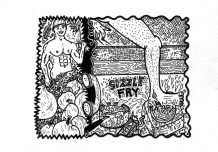




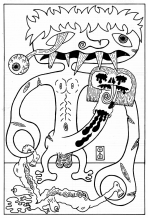
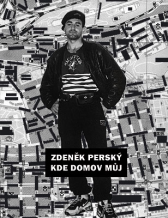
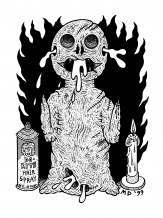
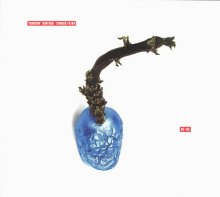


 New book by I.M.Jirous in English at our online bookshop.
New book by I.M.Jirous in English at our online bookshop.
Comments
There are currently no comments.Add new comment